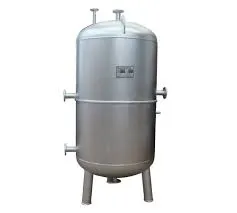steam boiler for garment factory factories
Steam Boilers for Garment Factories An Essential Component of Textile Production
In the fast-paced world of garment manufacturing, efficiency, productivity, and quality control are paramount. One of the essential components that significantly influence these factors is the steam boiler. Steam boilers play a crucial role in garment factories, powering various processes that are integral to textile production. This article explores the importance of steam boilers in garment factories, their functions, types, and the benefits they provide.
What is a Steam Boiler?
A steam boiler is a closed vessel that uses a fuel source to heat water, converting it into steam. This steam is then used to provide heating energy for various applications within a manufacturing facility. In garment factories, steam is primarily utilized for fabric treatment, dyeing, drying, pressing, and other processes that require heat.
Functions of Steam Boilers in Garment Factories
1. Fabric Treatment Before fabrics are dyed and finished, they often undergo treatment processes that require heat and moisture. Steam from boilers provides the necessary heat for operations such as scouring and bleaching, helping to prepare the fabric for further processing.
2. Dyeing Processes The dyeing of textiles is a heat-intensive process that relies on consistent steam supply. Boilers ensure that the dyeing machines operate at optimal temperatures, promoting even dye distribution and enhancing color fastness.
3. Drying and Finishing After dyeing, fabrics must be dried effectively. Steam boilers facilitate this by providing the heat required in drying processes, allowing for quicker and more efficient moisture removal. Additionally, steam is used in finishing processes, such as setting the fabric’s shape and enhancing its texture.
4. Pressing and Ironing The final stages of garment production involve pressing and ironing, which require significant amounts of steam for effective wrinkle removal and finishing. Steam boilers supply the hot steam needed in pressing machinery, ensuring that garments meet quality standards.
Types of Steam Boilers Used in Garment Factories
steam boiler for garment factory factories

1. Fire-Tube Boilers These boilers contain tubes filled with hot gases that pass through water, generating steam. They are known for their efficiency and are commonly used in smaller garment factories.
2. Water-Tube Boilers In contrast, water-tube boilers have water flowing through tubes surrounded by hot gases. These are suited for larger factories needing high-pressure steam and are known for their operational efficiency and quick response times.
3. Electric Boilers Some garment factories opt for electric boilers, particularly in regions where electricity is readily available and reliable. While they may have higher operational costs, they provide clean and efficient steam generation.
Benefits of Using Steam Boilers
1. Energy Efficiency Modern steam boilers are designed to be energy-efficient, helping garment factories reduce their overall carbon footprint. By utilizing advanced technologies and fuels, these boilers can lower energy consumption significantly.
2. Cost Savings Although the initial investment in a steam boiler can be substantial, the long-term operational savings can outweigh upfront costs. Efficient steam systems reduce energy bills and contribute to lower production costs.
3. Consistent Quality Maintaining consistent steam pressure and temperature is crucial for the quality of textile products. Reliable steam boilers ensure that factories have the steam they need to maintain production schedules and meet quality standards.
4. Environmental Compliance With increasing regulations on emissions, garment factories must turn to cleaner technologies. Modern steam boilers can be equipped with emission control systems to ensure compliance with environmental standards.
Conclusion
Steam boilers are the backbone of garment factories, playing a vital role in numerous production processes. From fabric treatment and dyeing to drying and finishing, these systems contribute to efficiency, quality, and profitability in the textile industry. As garment factories continue to evolve and embrace sustainable practices, investing in advanced steam boiler technology will be essential for maintaining competitive advantages in a global market. The future of garment manufacturing will undoubtedly rely on the integration of efficient steam solutions to foster innovation and sustainability in textile production.
-
Top Electric Steam Boiler Makers | AI-OptimizedNewsJul.31,2025
-
Top Electric Steam Boiler Manufacturers - High Efficiency SolutionsNewsJul.30,2025
-
Top Electric Steam Boiler Manufacturers – Efficient Industrial SolutionsNewsJul.29,2025
-
Top Electric Steam Boiler Manufacturers | Reliable Industrial SolutionsNewsJul.29,2025
-
OEM Steam Boiler Solutions for Custom Needs | High Efficiency & VersatilityNewsJul.29,2025
-
High-Efficiency Thermal Oil Boiler for Industrial Heating SolutionsNewsJul.29,2025

